"Anyone who listens to an artist needs their eyes examined" -Claus Oldenburg
send us an email
You can track this page with Google reader, firefox add-on Update Scanner or others Click here for page
| current
issue submissions contact archive 180 studio 180 forum |
Cool Links |
my
soundtrack: folkradio.co.uk Kim Taylor my other blog: Unka Kim's Bloggie Thingie my workshops: 180 photo workshops my daily photo fix: Flak Photo |
blog
archive
|

"DROPS"
by Kenjiro Kitade
also featuring the "Tree Project" by Hiroshi Sunairi
In recognition of the 65th anniversary of the bombing of Hiroshima + Nagasaki
Reception with artist August 6th, 6pm - 8.30pm
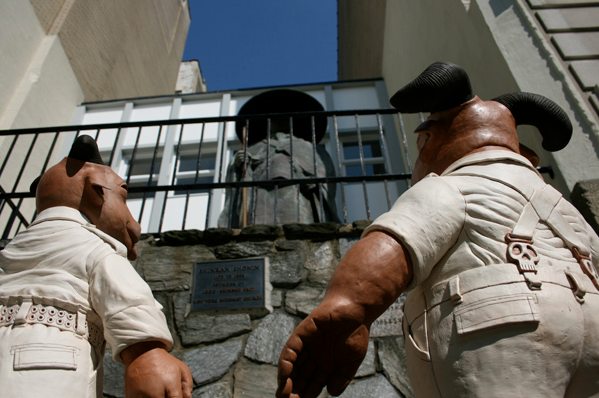
Little Boy + Fat Man
photographed by Kenjiro Kitade on location at one of the sites from the Manhattan Project
675 Hudson Street 4th floor
in the heart of the meatpacking district
between 13th + 14th Streets
tel. 212 925 1111
e-mail ivy@oneegg.net
site. ivybrowngallery.com
Please have a look at my latest images (some kind of experimental work with my old flatbed-scanner)
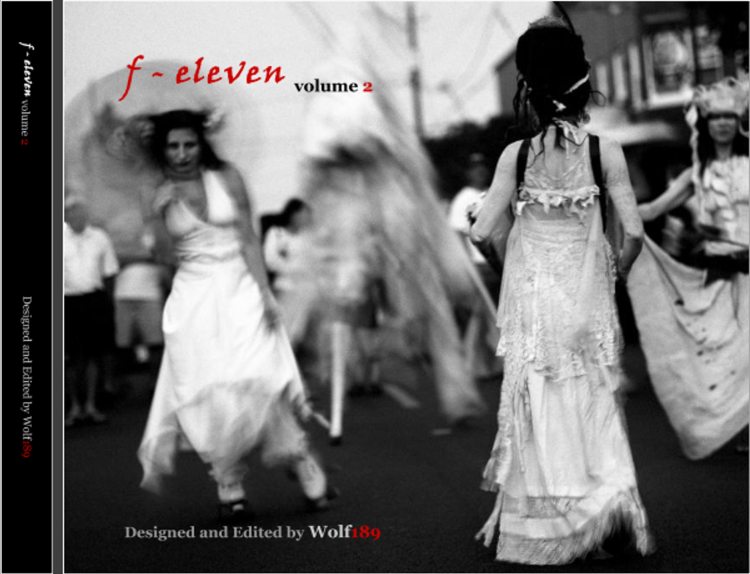
Coinciding with the month of autism awareness* and to raise attention to the effects of the Fragile X Syndrome, 100% of the proceeds from the sales of the f-eleven vol. 2 will be donated to Autism Research*.
The coffee table quality photography book, edited by internationally published and exhibited photographer and art director Wolf189 ( http://wolf189.com , http://wolf189.tumblr.com/ ), features the work of 19 talented photographers of multiple genres.
The result is a trend-challenging, and visually stimulating collection presented in a luxurious format. Printed on 100lb coffee table book standard paper with a silky finish, the book will handle many years of viewing.
f-eleven vol.2 is on sale now: http://www.blurb.com/my/book/detail/1239715
“We hope that this book would help raise awareness and provide some financial assistance for this worthy cause,” said Leo Lam, a fashion photographer in Seattle, and one of the contributors of f-eleven vol. 2.
f-eleven is an exclusive private photography group. The book project was started by its members in late 2009, and since then have produced two book releases. The books are diverse and progressive, with the fundamental aim to affect small positive changes in worthy causes; one shutter click at a time.
blog: http://www.blog.f-elevenbooks.com/
facebook: http://www.facebook.com/f11books
List of contributing photographers:
Brooks
Ayola (portraits)
Ralph Barker ( fine art landscape +
still life )
Mariah Carle ( portraits )
Sita Mae Edwards ( fine art nude )
Stephen Haynes ( fine art nude +
travel )
Patrick Robert James ( fine art nude
+ landscape )
Leo Lam ( editorial fashion )
Dave Levingston ( fine art nude )
Frank Love ( street / documentary
work )
Darryl Martin ( fashion portraits )
Stephen Melvin ( journalistic
wedding )
Ken Mierzwa ( documentary /
commentary portraits )
D. Brian Nelson ( Nude Portraits )
Keith Allen Phillips ( fine art
fetish portraits )
Sarah Robertson ( personal work )
Dave Rudin ( fine art nude + travel )
Ward Shortridge (street photography)
roman T. (street photography)
Wolf189 ( editorial fashion + erotic
portraits )
Thank you for all of your supports… help us to make our efforts count.
Learn about Fragile X Syndrome:
http://www.autism.com/autism/behavior/fragilex.htm
* The Autism Research Institute (ARI):
http://www.autism.com/index.asp
Our intention (editor and the contributors of this book ) has not been coordinated with this respectful charity yet, but it is our wish and intention to donate all of the profits of this book to The Autism Research Institute (ARI).
"Man is the measure of all things" said Protagoras. (Hey, in the age of google it is inexcusable that a quote not be attributed so don't turn your nose up at me quoting a pre-socratic Greek and naming him.) True or not, we are certainly the measuring animal, the classifying animal, the animal most likely to look for meaning in everything that happens to us. Witness phrenology, astrology, angel-worship, and the belief that statistics does not apply to those who buy lottery tickets which means that if you play your birthday often enough it's more likely to come up.
So, here we arrive, after our thought yesterday about snapshots, at a consideration of the snapshot itself, in all of it's despised thoughtless meaninglessness.
I propose to define a true snapshot as an image that has absolutely no interest to anyone who does not know the people or place in the photograph.
You're on vacation, you snap a shot of the Taj Mahal. Everybody knows what it looks like, so the shot is instantly viewed and dismissed. You snap a shot of some back alleyway in Chicago, same thing, it's a back alleyway and no different than any other, it's of interest only to he who was there.
Your friends in the living room? If I don't know Bob who has the straw sticking out of his nose, it's only some doofus with a straw up his nose... bored now.
A tree.... Hell I've got thousands of photographs of trees and rocks that I've taken over decades of trips into the bush and if they aren't put into a time sequence and I don't know where they are or the story of what we were doing when I took the shot, even I flip past them.
But, you say, I could very well find something interesting in Bob's expression, or the reaction of the other folks in the room to his foolishness. I could very well find some interest in the temperate desert of the interior of the Yukon Territories just a few miles from the Chilkoot Pass. The photograph of the back alleyway, by virtue of existing, forces me to look until I actually find the reason for the shot, maybe that pattern of garbage strewn across the light that streams out of the door over there.
We look for meaning, it's hard-wired into us. So here's your assignment for the month. Take a snapshot.
Take a photograph that, when handed as a single print to someone, they glance at it and forget it.
No fair putting it into a series on the net to be flipped by at speed on the computer screen, make it "important" by printing it out, and then hand it to a friend and have her say "why did you hand me this to look at?"
That's your successful snapshot.
Here's my try:
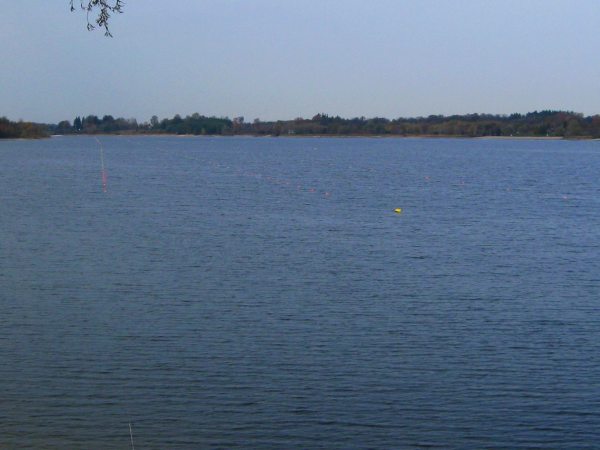
To be fair I fixed the contrast, gamma and saturation a bit
It was pretty hazy and dull
A lot of art and arty photography today is what many call snapshot photography. A lot of on-camera flash, kids from the 'hood posing, point and shoot cameras.
Perhaps a more friendly name would be "point and shoot ethos".
Regardless, there are some folks out there that are very good at it, and we've been featuring more and more of them in 180, but there are, as with all photographic styles, those who get the look but not the meaning.
Like my son who looked at an abstract painting yesterday and said "I can do that", there are those who look at the point and shoot style and say "I can do that".
And they can, anyone can get out the camera, point it at their friends and snap one off.
The problem comes when that shot is looked at by someone else. If it's truly a snapshot the viewer won't find any interest in the photo, it will not start the thoughts flowing.
A "point and shoot ethos" image (OK that's a crap name for the style) will arrest the eye for some reason, it will make the viewer stop and think, if only for a moment.
The image doesn't need to actually be conceptualized, it doesn't actually need to have an underlying meaning, it just needs to give that impression to the viewer.
Example: I was looking at the work of a photographer today and skimming along as fast as the website would allow me to change from one shot to another when I stopped dead on seeing a particular shot. Earlier in the series I had seen another shot with a word displayed that was repeated in the second shot. I won't get more specific since the particular artist isn't important to my point and I haven't discussed his work with him yet, but it occurred to me that without knowing anything at all about his work, those two images were enough to give me the feeling that he had an underlying unity. That he had a theme.
The impression was enough, and the word repeated once was enough for that impression.
It's a delicate balance of course, putting a ratty pair of old sneakers on a hundred nude girls and calling it "The Sneaker Series" is hackneyed and an obvious excuse to photograph nekkid wimmin, but sneak that same pair of sneakers into three or four shots in a long series of interesting snaps, and call it "Comfortable" and you give the impression that there's some meaning here... which is enough to start the viewer thinking and soon a meaning appears.
Which is enough.
-

-
The annual art and antiques fair in Maastricht is arguably the grandest event of its kind in the world. Mixing ancient relics, coveted old master works, precious antiques, and prime examples of modern art and design in a stylishly designed hall — overflowing with colorful displays of roses and tulips — TEFAF Maastricht has no rivals.
The 2010 show, which continues through March 21, features 263 exhibitors from 17 countries and boasts an endless array of masterpieces, including Botticelli’s magnificent Madonna and Child with the Infant Saint John, Danish designer Poul Henningsen’s surreal interpretation of a grand piano, Damien Hirst’s troubling split-pig in two shifting tanks of formaldehyde, and Gilbert Stuart’s iconic Portrait of George Washington, which was the basis for his image on the dollar bill. With so many treasures on view, it’s no wonder that private jets dominate the runways of the Maastricht airport on opening day and more than 60,000 visitors animate the aisles during the run of the show.
Enjoy a thought-provoking, fascinating time with us on any weekday afternoon,
and on Mondays and Thursdays until 7:00 pm.
Library and Gallery Open to Public
| Monday:
|
11:30 am - 7:00 pm, extended hours |
| Tuesday:
|
11:30 am - 4:30 pm |
| Wednesday:
|
11:30 am - 4:30 pm |
| Thursday:
|
11:30
am - 7:00 pm, extended hours |
| Friday:
|
11:30
am - 4:30 pm |
| Select Saturdays: | 12:00
pm – 5:00 pm Check our website at www.jftor.org
for exact dates. |
About The Japan Foundation, Toronto
Located in the heart of Yorkville, the Japan Foundation is your gateway to Japanese culture in Toronto.
As the only public-lending library in Canada specializing in Japanese culture, The Japan Foundation, Toronto Library boasts a collection of over 17,000 Japan-related books, language materials, magazines, DVDs, CDs, and a major Manga/Anime collection in English and Japanese. The Japan Foundation, Toronto Gallery holds regular visual arts exhibitions throughout the year, introducing various aspects of traditional to contemporary Japanese arts. Our evening lectures, workshops, film screenings will also provide you with an opportunity to see the world from a new perspective.
Currently at the Japan Foundation, Toronto:
Counter-Photography: Japan’s Artists Today
March 5 – May 15, 2010
Contemporary photography from Japan, featuring 11 artists who attempt to capture a hidden world through their work.

The Japan Foundation, Toronto
2nd Floor, the Colonnade, 131 Bloor Street West, Toronto
TTC station: Bay or Museum
Pay parking available underground
416-966-1600
website: www.jftor.org
email: info@jftor.org
a nice interview with me on the work of illustrator, features on www.scamp.ie
(the blog of the IGI, the Illustrators Guild of Ireland)
I thought you might like to take a look at it
Kind regards and please keep in touch when you like
Mario
Mario Sughi
www.nerosunero.org
Mario's 180 story here: http://180mag.ca/0712/sughi/sughi.html
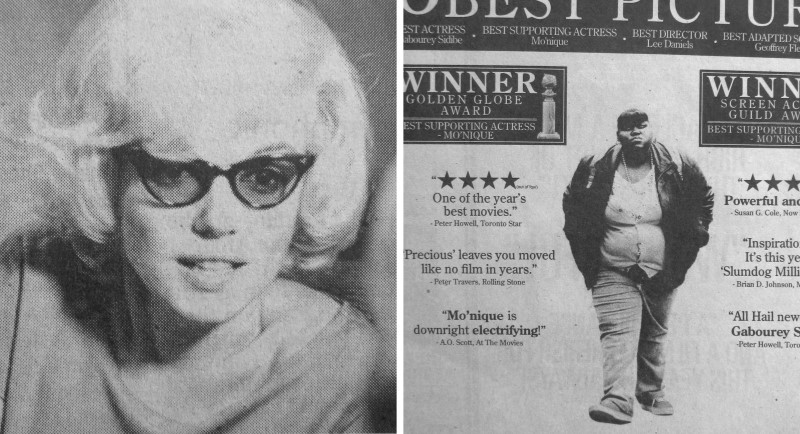
Looking over the newspaper today I found a couple of photographs on a couple of different pages and I thought that I'd let them say what I had to say.
Addendum: OK some background for those who aren't hearing much from my dyptich above. The image on the right ought to be simple enough, Oprah has given us this multi-award winning motion picture and its star. This is "today". On the left is a shot from a 1961 series of photographs by Len Steckler at his studio which have just come on sale, it is Marilyn Monroe a short time before her death in discussion with Carl Sandberg the poet, five years before his death.
Now that you can buy a subscription to a photographic stock agency and download X number of photographs, regardless of what they are or who took them, photography is at the same level as shoes and shirts. It's just another commodity.
I was reading the business section of my paper today and in an article about the reluctance of Canadians to get into the market, despite it's rise over the last couple of months, there was a photo of a roll of money stuffed into a combination lock. I didn't have to check to know it was stock. Of course it was, it was sort of related to the article but in that businessman jumping in the air with briefcase kind of way, which is to say it didn't contribute anything to the article.
At first I thought that they could have used the space for an ad, but then I realized this was a newspaper after all and they are likely short of those. I eventually decided the shot was there to break up the text for those who get confused with too much text.
That's stock photography, something that nobody is going to look at, that doesn't contribute to the story, but that adds a bit of colour and breaks up the text. It's photograpy as doughnuts, something to consume for the cheapest price you can find.
I've been tempted to do it myself. Check out some search terms, find a niche and go out to shoot the hell out of it. Upload a few dozen shots, spend a couple hours keywording them and then sit back and wait for the pennys to come flooding in.
It's thoughtless stuff for a thoughtless age where we buy dollar umbrellas that we don't mind lasting for a single use, since we never intend to use them more than once anyway.
Here's your homework assignment, look through the newspaper and similar types of media for a month. See if you can start to identify stock shots from assigned shots. Figure out what makes a stock shot identifiable and avoid that in your next shoot.
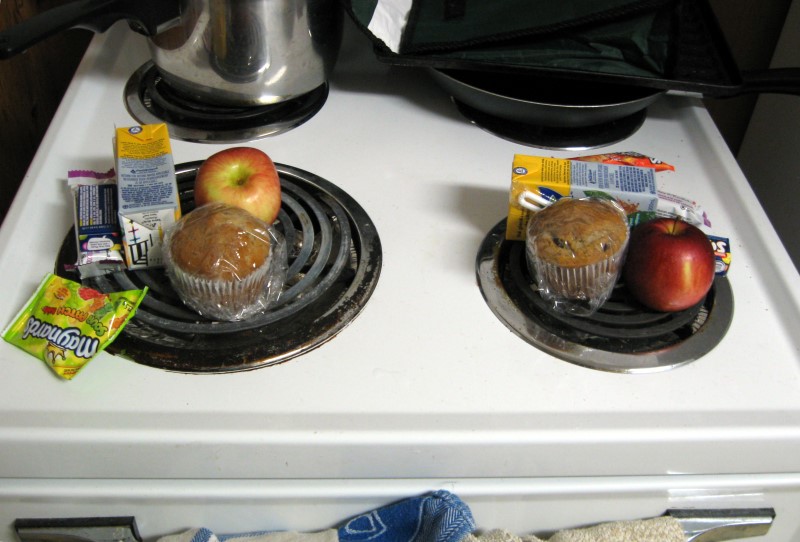
Lunch (What my kids get each morning).
It's time for a truly internet based school of photography so listen up, I'm going to outline for you the essentials of Rulism.
In a nutshell, each photograph that you take should conform to the correct rules of photography and each photo, in the exif/iptc data or in an accompanying caption, will fully outline the technical settings of the camera and the rules followed in such a way that other photographers can repeat the shot.
If a shot cannot be repeated by another photographer with the same equipment, it falls outside of Rulism and is no longer to be considered a photograph, but instead should be called a photo-illustration as it could have been done with Photoshop.
This is a wholly scientific way of photographing and will allow constant progress in the art as cameras improve.
Because there are some rules which can be considered contradictory, a strict heirarchy of rules will be observed, these are:
Camera
Composition
Display
or CCD
Camera:
- The focus will be tack sharp. This is the most important rule of all, and there will be a maximum depth of field which means that the smallest sharp aperture setting possible will be used.
- The colour will be saturated and accurate, use a grey card to set a custom white balance.
- The dynamic range will be maximized
- The lowest ISO on the camera will be used in order to minimize noise
- All images will be captured at the maximum resolution and in Raw format if the camera permits it.
- There will be no blur, all optical shake reduction systems will be turned on.
- Use the full array of focus spots so that you make sure your best focus is on the nearest part of your subject.
Composition
- Select one subject and isolate it. There will be no cropping later, zoom in if you're too far away.
- Eliminate background clutter and make the background contrast with your subject.
- Use the rule of thirds at all times, place the subject on one of the thirds spots. Turn on your composition assist lines to help you find this spot.
- Place the horizon line at the top or the bottom thirds line and make sure it's straight.
- Make sure there is a diagonal line in the shot that leads from a corner to your main subject.
- Make sure there is an S-curve in the shot.
- Shoot from above or below the subject or get down to eye level if you're shooting kids, never shoot from six feet above the ground.
- Make sure your photograph is not balanced, and always have an odd number of subjects in the shot, preferably 3.
- Frame your shot, make sure something in the image frames your subject.
- Direction of movement, whenever your subject can move, make sure it's moving into the photograph.
- No amputations, make sure it doesn't look like your subject has an arm or leg or worst of all, head cut off at the edge of the image.
- Make sure it's red.
- Make sure the print is as large as your printer can handle, or as large as you can afford.
- All prints must be done with pigment ink on archival paper and mat board and framed properly.
It has become trite to point out that photographs aren't really "real", that even an un-edited photograph is manipulated to the extent that the photographer framed the image.
Yet we still get scandals like the recent case of a wildlife photographer of the year being stripped of his prize because the judges have decided his photo of a wolf jumping over a fence was of a tame wolf and not a wild wolf.
The issue here isn't that there is a problem with photographs being real or not. As I said, it's a trite claim, all photographs are unreal, and Rene Magritte's painting of a pipe is not a pipe. (It's not a wolf, it's an image of a wolf, wild or not).
The issue is that a member of a group has transgressed the common values of that group. In the wildlife photography community it is a generally accepted tenet that a photograph of a wild-wild animal "in the wild" is of more value than a photograph of a wild-wild animal in captivity and much more valuable than a tame-wild animal. The problem is not that a photograph was manipulated, it wasn't any more than usual, the problem is that the wolf picture was not taken in the wild and the wolf was not wild-wildlife. The photograph was as real as it ever could be, but the values of the community were violated. It was produced in a non-approved way.
This wasn't always the case, I remember lots of television shows from my youth where wild animals were herded and manipulated in some way to get the shots, where film footage was heavily edited, Disney and Mutual of Omaha's Wild Kingdom come to mind. This manipulation never seemed a problem because, I suspect, there was no way that the Television or film cameras of the time were going to be able to film that wildlife. If it can't be done, it's OK to do it another way.
Images of war used to be painted and sketched, nobody ever worried that artists would move people or landscape around to make a better composition.
Today we have small, portable cameras and video so it is theoretically possible to shoot the war up close and personal (at risk of the cameraman's life perhaps). Indeed, there was a great deal of discussion recently about Roger Fenton's The Valley of the Shadow of Death photographed in 1855 in the Crimea. The discussion centered not around the emotional impact of the shot (of a road covered in cannonballs), but on whether or not Fenton moved the cannonballs around.
It is also now possible to shoot wild-wildlife in the wild, again at considerable personal effort and expense, and so if it is possible, I suppose it must be necessary or at least more valuable to do so. We value the effort rather than the result, the adventure rather than the image.
You and I may not find a photo of a tame wolf jumping a fence to be any different than a wild wolf doing the same thing, but in the wildlife photography community there is a large difference between the effort invested to get the shot. So the photography award was for luck or the willingness to sit for days waiting for the shot, or for the expensive automatic equipment that would be needed to get the shot.
What will happen in the next 50 years as the human population grows to 9 billion and there is much less wild? What happens when the majority of the wildlife photography community cannot get photographs of wolves in the wild since there are only 10 left? Will it become acceptable to take photographs of wolves in zoos once more? I suspect it will or animal photography will cease being produced.
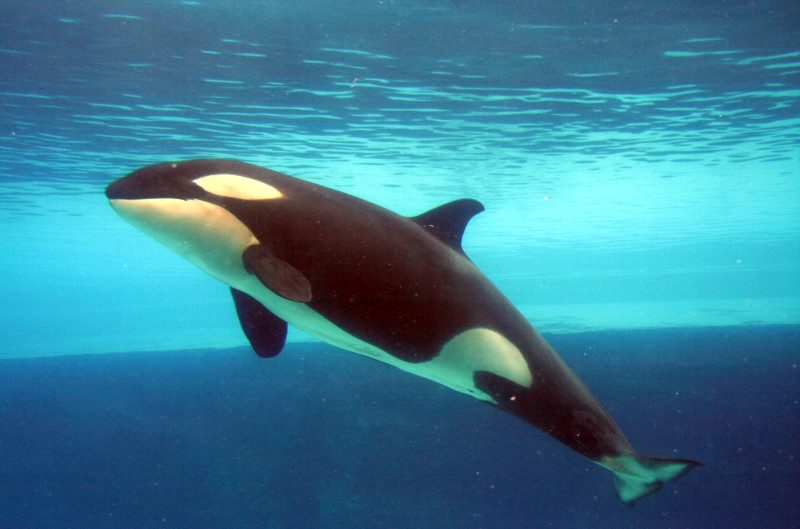
Here's my shot of a killer whale, not taken in the wild.
What makes one of your shots better than another one? Is time a factor in your decision?
It certainly is with me, I put a lot more value on things that take me longer to make and that includes photography. If I find models, get makeup artists and stylists, rent a studio and spend a couple hours playing around with lights I count those shots as more valuable than a simple grab shot. But am I justified in thinking this way?
Here's a quite lengthy shot of Lauren:
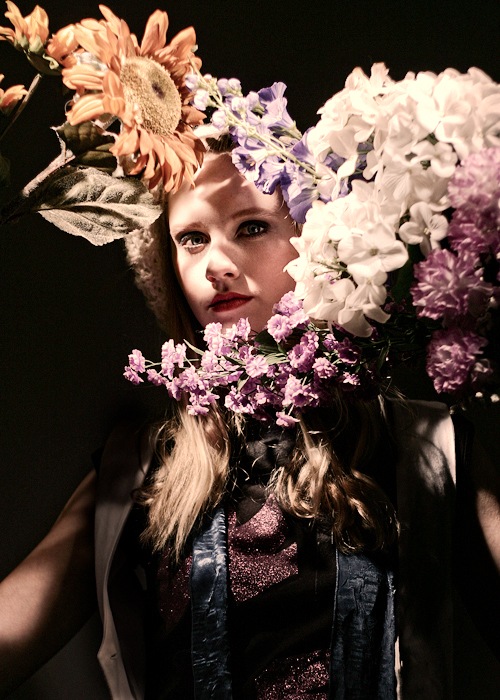
Makeup, styling, hair, props, lighting took maybe 2 hours. Post-processing was done by George Qua-Enoo. Total creation time I'd estimate at 3-5 hours, planning and prep at two weeks and cost at several hundred dollars even though everyone was working for free (studio rental, food, props, gas...). I like it, and it's the current background on my ipod.
Now in comparison, here's another shot of Lauren, taken on the fly at an outdoor market where she grabbed a hat and mitts and posed for me in a bit of open shade. This one has had no work done on it except to be cropped as far as I can tell (I just grabbed it off my desktop where it has hung around for years). Total creation time less than 2 minutes, (cost also almost nothing):
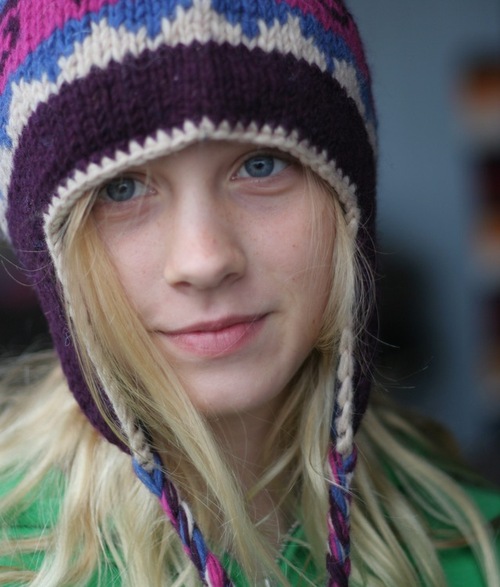
Is one a better fashion shot than the other? It depends on what you want to say with the shot, what message you're trying to get out. Is one more emotive than the other, one cuter?
Whatever criteria I use in looking at these shots the one thing that doesn't seem to come into it, looking back from a year or more, is how much time I spent getting either shot.
Take home lesson... don't dismiss the shot you made on the fly, it may say more than the one you spent a week on.
You or the technology? Yes, everybody says that they are the person behind the camera, the intelligence that controls the technology, the artist using his tools, but think a bit about how and what you shoot.
First, consider that there is an unavoidable influence of technology on what and how you shoot. If you have a slow film you are going to shy away from auto racing as a subject, if you have an 8x10 view camera you are going to shy away from hip-shooting street photography.
Use the right tools for the job, absolutely, but the tools will also affect the way you do the job. Let's go to our point and shoot and SLR cameras. The old ones used film and we were pretty selective about what and how much we shot. Our way of shooting was slow and deliberate, we thought about what we shot. With digital we can shoot as much as we want, we can "spray and pray".
With digital technology we can also get into our post-processing mode and start tweaking everything. Do you find yourself doing that to a perfectly nice shot whether it needs it or not? Just because you can do something doesn't mean you have to do it.
How many Promateurs out there (what else do we call those who aren't making a living at photography but buy "prosumer" cameras?) shoot only in raw because you can or because you've been told to shoot in raw because it gives you the most information to work with later? You do know that there are people out there who shoot with plastic toy cameras, and those who, in the old days, bought special lenses that created a soft focus right? Just because you can shoot at a 14 megapixel, 16bit uncompressed mode doesn't mean you have to.
Who needs 14 megapixels in a point and shoot camera anyway? When was the last time anyone blew a snapshot of aunt Maude up to 16 by 24 anyway? Yet we have no choice but to shoot and store at that size because that's all the manufacturers will sell us. When was the last time you saw a really good 6 megapixel point and shoot with great high iso performance? Well no, you've got 12 mp with the same crappy high iso performance that we had 5 years ago with the 3mp models. Yes the noise reduction software seems better, no it isn't being applied to a sensor with larger pixels... it's being applied so we can sell bigger megapixel cameras because the public seems to want them. So we don't shoot high iso with small cameras, we have to get out the SLR for that, and it's not exactly invisible in the dance club for our sneaky-shots.
Homework for this week: Go get one of your cameras and figure out what it wants you to do. Now see if you can force it to do something else and see if you like the results.
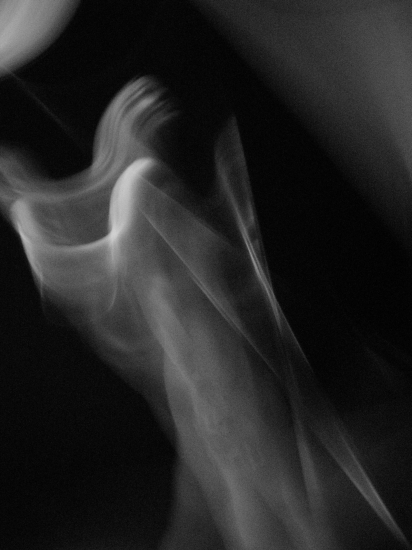
This was done with a Pentax W30, ISO 800, 1/4 second exposure, maybe in the "text" mode or converted later to BW. Lighting was with the modeling light of a speedotron flash.
From Frank Rheinboldt
180 story here
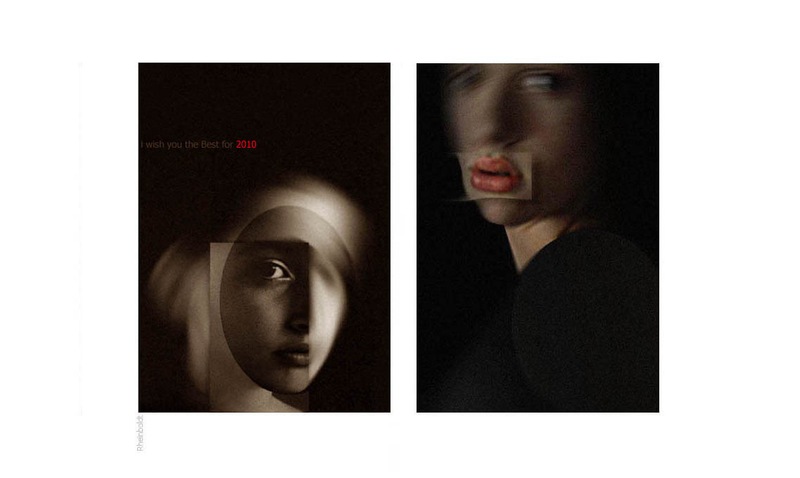
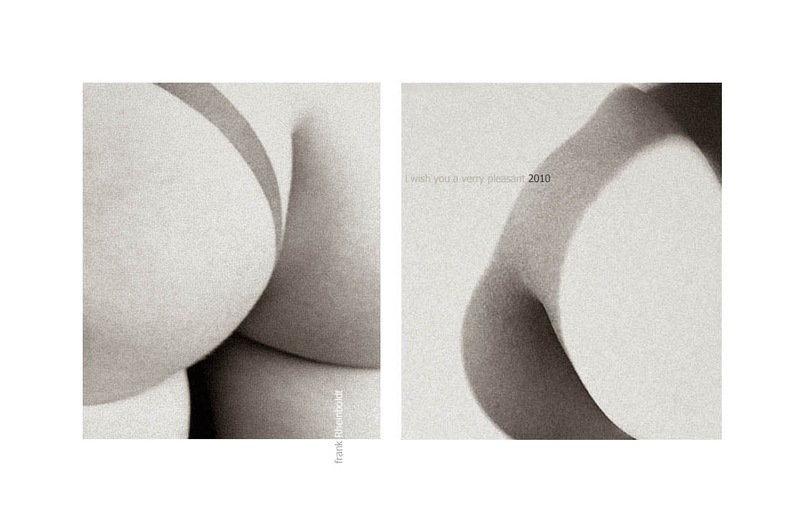
It strikes me that there may be a couple of reasons for the lack of chronological progress in photographic movements I've found so far (see a couple of posts down).
First is the age of photography. Compared to painting, photography is barely started on it's journey. From the mid-1800s to now is less than 200 years. Not very long to have developed a history of any sort. What this means is that the relationship between photography and painting which so many writers notice is perfectly logical. Where else is photography going to look for a history of influence but to the other two dimensional image art.
Which brings us to the second point, art history. Schools for painting have been around for 400 years or more, while schools for photography only became common in Colleges and Universities in the mid-'70s. Considering my own photographic career began in the '60s, there hasn't been a lot of time for the development of a sense of photographic history and thus a reflection back on earlier movements to create later movements.
In other words, most photographers alive today have tended to work in a vacuum, without reference to what has been done before. This means their visual education is the advertising imagery of the day and their textbook is the manual that came with their camera. Is it any wonder that the majority of work on online photo-sharing sites like Flickr looks the same? "Anyone with a camera is a photographer" goes the saying, and that's not without some justification. Pick up a camera and push the button and you will take an image that is as good, technically, as anyone alive can create with the same camera and the same framing. That is not so for painting. Few painters are self-taught, and the fine art programs of almost all schools require at least a stab at art history by their students. Thus the majority of painters are at least aware that there is a history of painting to consider.
For those who do obtain a fine art education in photography, there has barely been time for photographic educators to make an impression on their students, but there are some signs that this will be a source of movements, just as the education of painters by strong teachers has created movements and schools. There is the typology of Bernd and Hilla Becher whose influence can be seen in their students Andreas Gursky, Candida Höfer and the earlier work of Thomas Ruff. Many others now use typologies and grids and form what Wikipedia calls the "Becher School".
Ansel Adams, through his workshops and textbooks created a West Coast Landscape school which influences ideas on art photography to this day in the USA. He also created, through his Zone System, a fascination with dynamic range that is perhaps even more influential today than his landscapes in the present fascination with "High Dynamic Range".
The influence of Minor White can be seen in his students Paul Caponigro and Jerry Uelsmann and of course in anyone who read the early years of Aperture magazine which he edited up to 1975.
To see the various movements in photography which can be developed from a powerful teacher, simply pull up several tabs of Google images with teacher and students and flick between them. One may not think that Jerry Uelsmann and his combination prints would be similar to Minor White and his equivalences but the relationship of composition and tone is evident when looking at two pages of thumbnails.
So, photographic art movements will emerge, whether they will ever move themselves away from the history of painting is doubtful, but that is a small thing, of concern only to those with time on their hands.
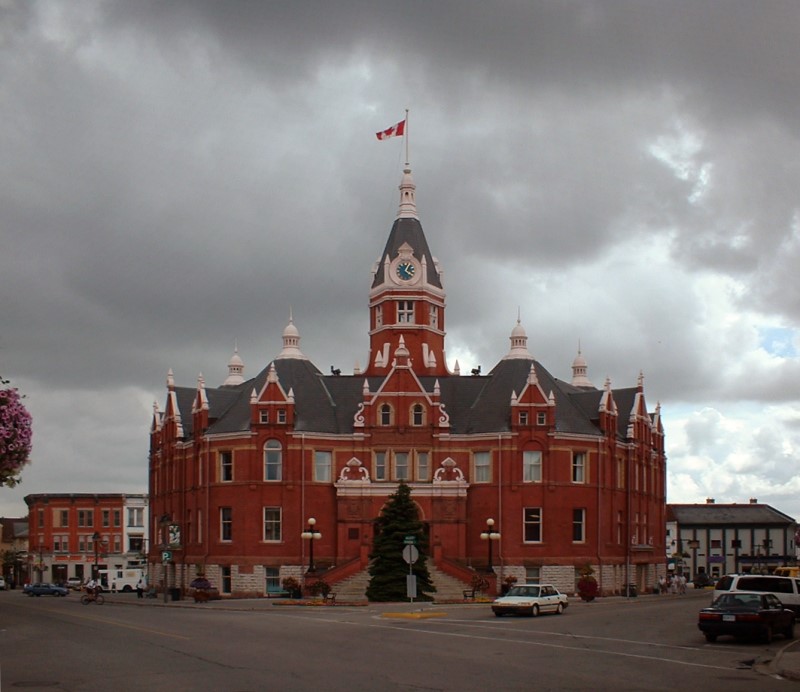
Here is my Becher School shot of the town hall in Stratford Ontario. Note the symmetry, note the Tudor-Frame building on the right. This was taken on my Finepix A201, a 2 megapixel fixed focus snapper that I lost somewhere. I miss it a lot and hunted for quite a while trying to find another one, I used to do quite a lot of work on my "what's down there" and "what's in there" series.
Now to be authentic to the school I suspect this should have been taken with an 8x10 camera on a tripod rather than me stopping and snapping while on a trip with the kids.
I really need to start shooting again, with time on my hands I'm thinking too much about theory.
Right, how do we classify photography? I can think of different classes of painting, the first that comes to mind is painting vs illustration. One being art and the other advertising I suppose. One you learn at University and one at College?
Can I list any pairs for photography?
- Amateur vs Professional
- Snapshots vs Photographs (amateur vs professional one presumes)
- Digital vs Film (really? still?)
- Commercial vs Art
- Pictorial vs Straight
Major classifications and their sub-classifications (more or less randomly listed)
Advertising Photography
- Stock
- Low Ad (Junk Mail)
- High Ad (Magazines)
- Lifestyle
- Catalogue
- Fashion and Beauty (makeup)
- Architectural and industrial
- Food
- Product
- Calendar
- Annual Reports and Business Portraits
- Wedding
- Baby
- Portrait
- School
- Model Portfolio
- Passport
- US Landscape (Yosemite National Park)
- European Landscape (Typology)
- Street
- Nude
- Glamour
- Fine Art
- Abstract
- Fetish
- Porn
- Portrait
- Clique (friends doing naughty things)
- Social Documentary (the homeless and other strangers being cold, hungry and dirty)
- Gothic and Alternative (corsets and fake blood, tattoos and piercings)
- Polaroid (shoot anything, desaturate and add a yellow tint)
- Toy camera (see polaroid)
- Beautiful photography
- Flowers
- Sunsets
- Trees
- Feedback Photography (Flickr and the other modern camera clubs)
- Newspaper/Documentary
- Magazines
- Travel
- News/Documentary
- Sport/Fitness
- Geographic/Scientific
- Music (cameras smuggled into a concert)
- Citizen (anyone with a cell phone when things happen)
- Self-reporting (Facebook)
I'm going to try to remember I've written this and add to it occasionally, if you've got any contributions the email is up there at the top.
